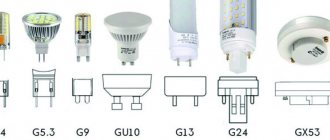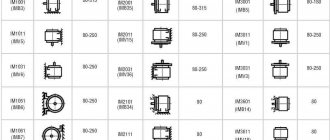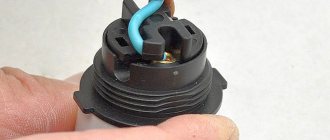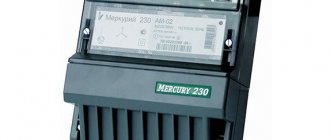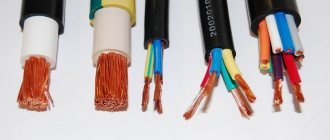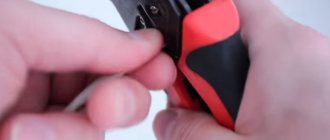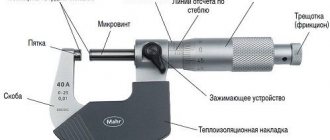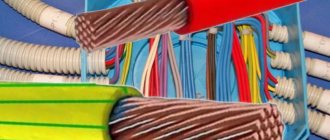PV wire decoding and application
The PV cord is a copper conductor for transmitting electricity over distances from the source to the recipient. It is protected by a special layer - insulation made of polyvinyl chloride. It is used for connecting electrical devices and mechanisms, as well as for grounding lighting paths.
According to generally accepted standards, the abbreviation PV means the following:
The letter P stands for wire. The designation K is also possible - cable. The letter B indicates that the insulating layer consists of polyvinyl chloride or vinyl.
If there is no letter A in front of the PV, this indicates that copper conductors are used as a conductive element.
As a rule, after the abbreviation PV a number from 1 to 6 is indicated, each of which is responsible for the flexibility class of the wire. Remember - the first class is the least flexible, but the sixth is the most flexible of all the types presented. The level of flexibility directly depends on the design of the wire itself and its characteristic features.
PV wires are very resistant to mechanical damage, mold damage and are quite wear-resistant in their parameters. A special feature of this product is its self-extinguishing insulation, which protects the wire from overheating.
The PV wire is used in the following cases:
- for connecting electrical devices to a current source;
- for grounding stationary and power lighting networks;
- for connecting electrical devices and devices.
Let's consider each type of cable: their features and scope of application.
FAQ
Question No. 1. Double-insulated wires are easily laid into grooves; you have to pull each wire separately; how can you speed up the process?
You can place sections of cambric over a pair or several wires at equal intervals and secure them into a bundle with electrical tape.
Question No. 2. Without double insulation, will the wire in the groove and distribution box withstand the declared cross-sectional load, will there be no short circuit?
Insulation does not affect current loads, only the cross-section of the wire; in other brands such as PUNP, wires of different polarities are also laid together with one insulating layer. The second general, external one is supposed to provide protection from moisture and mechanical shocks.
Question No. 3. Is it possible to lay a lighting network with a PUV wire on a cable through the air in the open air?
For safety reasons, it is better to pass the wire through a PVC tube and secure it to the cable with disposable plastic bundles with a lock that secures the tension.
Question No. 4. What size wire should I use for electrical outlets?
It all depends on the power of the devices connected to the sockets, usually 2.5 mm2 is laid for the iron of the refrigerator and TV. For more powerful heating devices, boilers, electric stoves and others, use 4 - 6 mm2. For a more detailed consideration of the issue of choosing a section, a separate topic is required. There are tables for selecting wire cross-sections based on the power consumed by electrical appliances.
Question No. 5. It is inconvenient to lay PUV in the grooves and cable ducts of a private house; without a common sheath, the conductors spread out, where is its use most effective?
PV-1 is very actively used for assembling circuits in distribution cabinets, connecting metering devices, RCDs, and circuit breakers.
An example of circuit assembly in a distribution cabinet
At industrial facilities, circuits with control elements are assembled in cabinets, contacts of transformers, magnetic starters and other elements are connected.
Rate the quality of the article:
Wire PV 3: technical characteristics
The PV-3 cable is deciphered as follows: P - indicates the wire, V - indicates that the cable design includes vinyl type insulation, and the number three indicates the flexibility class to which the electrically conductive core of the cable belongs. The higher the number, the more flexible the cable is.
Copper cable PV-3, which has a cross-section of 1x4, 1x6, 1x35, 1x25, 1x16, 1x10, 3x 2.5, 3x1.5 and 3x0.75, is produced by a Moscow company called MosKabelmet. This cable is often green or yellow-green. It also includes a copper core, which is very durable and flexible. This conductor is multi-wire, which means that it conducts electricity well, can be used for a long time and is very durable. Carrying out all the technical characteristics does not make sense, since only experts can understand some features of the cable.
There are 6 main characteristics, namely:
- This cable is used in power and lighting circuits;
- It is designed for operation with alternating voltage 400V and constant voltage 1000V;
- The temperature at which the cable can be used ranges from -50 to + 75 degrees, and installation is possible at a temperature not lower than – 15 degrees;
- Can be used at 100% humidity;
- The bending angle is possible up to 90 degrees;
- The warranty period is 2 years, but in practice it lasts up to 15 years.
Due to its wide cross-section, the cable can be used in any area. For example, installing wiring in an apartment, creating a separate electrical network, powering various electrical appliances, and the like.
Laying conditions
The PV-1 cable has a varied and extensive application. And, depending on the location and operating conditions, it can be laid:
- in hollow channels of building structures, mounting boxes, trays and pipes;
- as part of bundles located inside distribution boards, in electrical cabinets, as well as equipment control panels;
- in construction channels and metal pipes, on metal or plastic trays and for installation of lighting equipment;
- on the ground in metal or plastic pipes.
Without preheating, the cable can be laid at a temperature not lower than minus 15 degrees Celsius. The bending radii of the cable are at least 10 outer diameters. When laying, it should be taken into account that there is no moisture condensation on the structural elements at the location of the cable.
Technical characteristics of wire PV-1
- the specific electrical resistance of the PV-1 cable at a temperature of 20 degrees Celsius should be no more than 0.01724 Ohm mm2/m. Electrical resistance of surface insulation at the same temperature:
- upon acceptance after production and delivery to the destination – at least 1000 kOhm/km;
- during operation and storage period of the cable - at least 10 kOhm/km.
Cable PV-1
is produced resistant to mechanical shocks of repeated action, while the peak acceleration upon impact can reach 1500 m/s
2
, with exposure times ranging from 1 to 5 milliseconds.
Operating conditions for wire PV-1:
The use of PV-1 wire is allowed when
ambient temperature up to minus 50 degrees Celsius and at a relative air humidity of up to 100 percent at an ambient air temperature of up to +35 degrees Celsius. When using a cable, a prolonged heating temperature of the cores is allowed - no more than 70 degrees. The service life of the cable under normal conditions of use is determined to be at least 15 years, and the warranty on the cable is 24 months from the time of delivery. The PV-1 wire is produced in a construction length of at least 100 meters. By prior agreement, it is possible to supply cables of shorter length, but not less than 20 meters and in quantities not exceeding 10 percent of the total order quantity.
PV 1 parameters
Let's start with the design features. This is a single-core cable made of copper, in which the core itself can be either single-wire or multi-wire. By the way, tinned copper is used in production. As mentioned above, the wire insulation is PVC (polyvinyl chloride). As for the colors of the insulation, there is no specific color, so manufacturers offer their products in white PVC, black, blue, brown, red and yellow-green. That is, GOSTs allow this.
Now the cable specifications:
- It can be installed in a network with alternating current or direct current. In this case, the voltage withstood by the wire is 450-750 volts in the first case, and 1000 volts in the second.
- An alternating current network can have an oscillation frequency of up to 400 Hz.
- Currently, manufacturers produce wire with a cross-section from 0.5 mm² to 120 mm². That is, there is no wire marked PV3 4×240.
- The product can be operated at temperatures from minus 50C to plus 75C.
- Withstands transformer pressure 29.4x104 Pa and atmospheric pressure 5.3x104 Pa.
- Electrical resistance is not less than 1.0 MOhm/km.
- The length in coils is 100 m; upon request, a smaller value can be obtained, but not less than 20 m.
- The wire can be bent with a radius of 10 sections.
- The warranty period is 2 years, actual up to 15 years.
It is clear that the weight of the product will depend on its cross-section, so indicators on this issue can be found in the table below.
And one more point that concerns the question of how to correctly decipher the markings. For example, the installation wire is PV 3 10. The number “10” means that this is a cable with a cross-section of 1 mm². But in this case we are interested in another point. Everything below this section is single-wire products, everything above is multi-wire. That is, PV 1 6 is single-wire, PV 1 16 is multi-wire.
UHL equipment
UHL is one of the climatic options for electrical , radio-electronic and other equipment manufactured in the Russian Federation, which, together with others, is included in GOST 15150–69, where:
- “U” - operating conditions, that is, areas with humid, hot or dry, but moderate temperature conditions;
- "HL" - additional operating conditions. Indicates that the product can also be used in cold climates, but within the range of -50 to +70° C.
It is displayed in the form of letters and written in the last group of characters . Climatic modification UHL is typical for all cables of the PV 1 series .
Features of installation and operation
The main purpose of the PPV is to connect fixed wiring at industrial or residential facilities
In addition to practicality and versatility, the product attracts attention with its low cost
During operation of the PPV, several important features must be taken into account:
The rigidity of the product is associated with the monolithic design of the cores. The bending radius during installation should not exceed ten outer diameters. Ten cycles - exactly this number of bends is permissible at right angles with a return to the original position. These values must be taken into account when designing the cable route. Try to eliminate unnecessary bends and kinks. Polyvinyl chloride is a chemically resistant material. It is laid along a brick or concrete base, and can subsequently be hidden under a layer of plaster or putty. There is no need to use additional protective equipment. Modern building mixtures contain various additives and additives, which, when exposed to a single insulating layer, destroy it over time. If you do not know the composition of the solution, then it is still better to use additional protection in the form of corrugated pipes and boxes. When laying PPV under plasterboard or plastic boards, MDF, the presence of corrugation or cable duct is mandatory. Installation in the open air is possible, but many experts recommend using canopies or other devices that protect the product from direct sunlight. Hygroscopicity allows the PPV to be used in damp and warm rooms (for example, in a bathhouse)
In this case, it is important to use plastic protection (metal is not suitable). The route should be located at the bottom or mid-height
Choose a three-wire wire with an RCD connection.
Cable storage and transportation conditions
For any cable products, you must follow a number of rules for storage and transportation. Store wires only in a dry room with low humidity. Otherwise, mold or mildew may form on the product. It is advisable to make sure that there are no rodents in the warehouse that could damage the insulating layer. Storage is allowed at temperatures from 15 to 25 degrees. It is allowed to place cable reels outdoors, but away from direct sunlight.
Important! Cable drums must not be placed on their sides.
Manufacturers of PV-1 cable
At the end of 2022, there are more than fifty enterprises producing cable products in Russia. Experienced professionals recommend choosing factories that have been operating for a long time and have impeccable reviews. Below are a number of leading factories that supply worldwide.
"Belaruskabel"
The factory was founded in 1950 of the last century. Today it produces a huge number of cable products. There are more than 50,000 macro sizes of products in stock. The company actively cooperates with countries in Europe and Asia. They work in the agricultural industry, aircraft engineering, instrument making, etc.
Production process
"Rybinskkabel"
The plant was founded in 1949. During its existence, the company founded many branches throughout the country. The plant is famous for its high-quality products at fairly reasonable prices.
Important! The manufacturer offers an individual approach to even the smallest order. More than 25,000 thousand types of standard sizes available
"Kavkazkabel"
The company was opened in 1975. There are currently more than 35,000 thousand types of sizes in stock. The company has won regional competitions many times and has received many awards and commendations. Actively cooperates with European countries.
Section table
"Sevkabel"
One of the oldest factories, founded in 1879. The range includes more than 30,000 thousand macro-sizes of wires. By the end of 2020, the company plans to complete modernization. The latest equipment is installed in the workshops, and the plant also has its own testing center. Therefore, all products are of high quality. The plant has many awards and positive reviews.
In conclusion, it should be noted that the PV1 wire can be used not only for residential premises, but also in industry and aircraft construction. The product has proven itself to be excellent for permanently connecting devices.
Explanation of cable markings
Main classification of power cables:
- The symbol A indicates that the core is made of aluminum alloy. If this letter is not in the name, it means the vein is copper;
- B - means that the internal insulation is made of PVC material;
Product design
- B - the second letter, indicates that the outer shell is made of thicker PVC;
- P - indicates that rubber insulation is used in this wire. NR means that rubber does not propagate combustion;
- P - indicates that the outer shell is made of polyethylene;
- If two symbols AC and AA are indicated, this indicates that the conductors are aluminum with a lead sheath;
- B or Bn means that the electrical wire is protected by an armored layer that is resistant to fire;
- G - this symbol allows you to use such a cable for laying electrical wiring in mountainous areas. This letter can also indicate whether the wire is bare or not;
- d - it will be indicated that the wire has high sealing;
- Shv, Shp, Shps - means that the outer covering is made of a hose made from PVC, polyethylene or other non-flammable compounds;
Table for power cables
- O - means that for each electrical wire you need to install its own protective sheath;
- ng - non-flammable electrical cable;
- E - indicates that the product is used for mine placement in particularly hazardous areas.
Examples of such cable products include AVBbShv, VBbShv, VVGng, KGNV, SIP and so on.
Below is how to correctly decipher the control wires:
- K is the main designation of the control wire. Mainly located in the first place in the marking;
- symbol A - indicates that the core is made of aluminum alloy. If this letter is not in the name, it means the vein is copper;
- B - indicates that a polyvinyl chloride sheath is located around the phase conductors;
- B - the second letter, indicates that the outer shell is made of thicker PVC;
KSBKNG A -FRLS 2×2x0.8
- F - the insulating shell is made of fluoroplastic;
- G - bare cable;
- Ш - indicates that this is a cord;
- E - shielded wire.
Examples of such wires are KGVSh, AKVVG, KVVGng.
How to choose the right PV 3 wire
When purchasing a wire from a little-known manufacturer, it is worth testing it. How to do this is indicated in the previous chapter. If the product is presented by a reputable manufacturer, then the consumer is unlikely to purchase a low-quality product. Naturally, such a wire will cost more. The cost of purchasing a high-quality wire will be more than recouped by trouble-free operation for many years.
Several domestic enterprises in the electrical industry produce high-quality wire products. These are plants such as Spetskabel, Moskabelmet and MTPC. Manufacturers provide a 2-year warranty on the PV 3 wire. Practice shows that cables of this brand last an average of 15 years.
Approximate prices for wires
The price of wires depends on many parameters, mainly on the cross-section of the wire and the region in which it is sold. In Moscow and the region prices are approximately the following:
| Price in rub. | Section mm2 |
| from 3.5. | 05 |
| from 4.5. | 075 |
| from 6. | 1 |
| from 8.5. | 1.5 |
| from 51.5. | 10 |
| from 34 | 6 |
In most cases, prices in other regions of Russia and CIS countries do not differ significantly. Prices for PV-1 wires in Novosibirsk:
| Cross section of one PV-1 core in mm2 | Price in rub. |
| 0,5 | 2.39 |
| 0,75 | 3.59 |
| 1 | 4.86 |
| 1.5 | 6.58 |
| 2.5 | 10.24 |
| 4 | 15.98 |
| 6 | 24.35 |
| 10 | 40.56 |
The terms of sale are the same in almost all companies; payment by non-cash or bank transfers is possible. Delivery within the city is free to other regions, taking into account the carrier's prices; wholesale customers receive significant discounts. The tables show that in provincial regions remote from the capital, prices are slightly more expensive. Apparently, this is due to transportation costs, data taken as of 08/08/2017.
PV cable 3
The design of the PV 3 cable is a single stranded copper core twisted into one bundle. Its feature is high strength and good flexibility, as well as high electrical conductivity.
PV 3 insulation is made of polyvinyl chloride. The color range is very diverse: the manufacturer offers white, yellow and black cords. If the wire is used for grounding, the color of its coating will be yellow-green.
Scope of application
The use of PV 3 cord is quite common in many areas of the manufacturing industry. For example:
- in communication systems;
- to create individual electrical conductive networks;
- for installation of conductive paths, both in the apartment and in open space.
A double layer of insulation will protect the user from adverse situations. The cord is excellent for working with high levels of electricity and is most protected from external factors, and therefore is often used in open, unprotected places.
Technical specifications
The PV 3 cable is resistant to moisture, steam and condensation, which makes it indispensable in such a working environment. It is perfect for use in damp environments: baths, saunas, and bathrooms.
The cable can easily withstand temperatures from +60 to – 70, therefore it is an indispensable PV in extreme conditions.
During the manufacture of the wire, a special component is added, due to which it emits an unpleasant odor that repels pests. It also copes well with mold, and thanks to its shell, if damaged, it does not allow sparks to pass beyond the affected area.
Laying conditions
Due to the strong insulation and the presence of one core, it is often laid directly without any bends in order to avoid damage that could lead to disruptions in the transmission of electricity, cause overheating or the appearance of microcracks in the core itself. For its installation, adapters are often used (in those places where cables such as PV 5 or PV 6 can be bent) in order to avoid unpleasant consequences. Quite often the cable is used as grounding.
Scope of application PV1
Taking into account all the characteristics presented above, it is necessary to emphasize high insulation parameters and low resistance. Wires of this type can be used for laying power lines and connecting a ground loop.
It is necessary to prevent the conductor from moving during use. The absence of an armor layer implies limited resistance to mechanical damage. There is no shielding layer, so sometimes electromagnetic noise may occur.
When laying a path, it is advisable to place the wires in cable ducts or corrugations. This will further protect them. If there is a need for air laying, then it is imperative to use supports that will protect the product from sagging. Also, the conductor is used when laying lines for alarms or CCTV cameras.
Important! The scope of application of PV1 is extensive - from residential premises to heavy industrial enterprises.
Protective corrugation
Advantages and disadvantages of PV 3 wire
Like any conductor, PV 3 has its pros and cons. Positive sides:
- The conductor has an average level of flexibility, which is quite enough to solve many installation problems where PV 1 and PV 2 would perform poorly.
- Excellent resistance to external factors due to the insulating layer and polyvinyl chloride. A wire with undamaged insulation is not susceptible to water, moisture, mold or temperature changes.
- The presence of fire retardants in the insulation - special substances that extinguish themselves. If a wire catches fire due to a fire, its insulation will not begin to burn and will prevent the flame from spreading.
- Low cost. PV 3 wire is quite cheap compared to its analogues, which makes it even more attractive in the cable and wire products market.
- The guide is not afraid of rodents. This is possible due to the fact that the insulation is impregnated with a special substance that repels insects and mice.
Wires PV-3, PV-1, PuGV
Among the disadvantages of the wire, the following stand out:
- One layer of insulating coating.
- Mechanical memory of the core. If the cable has been lying twisted for a long time during use, it is not recommended to unbend it.
Storage of PV 3 in reels
PuV wire load currents
Permissible load currents for wires are not regulated in GOST. In accordance with the PUE, for any installation method it is recommended that for single wires not exceed the load currents indicated in the table.
| Section | Permissible load current, A |
| 0.75 | 15 |
| 1 | 17 |
| 1.5 | 23 |
| 2.5 | 30 |
| 4 | 41 |
| 6 | 50 |
| 10 | 80 |
| 16 | 100 |
| 25 | 140 |
| 35 | 170 |
| 50 | 215 |
Wire PV 4
The PV 4 cord is designed as follows: copper wires twisted together into one wire, covered with a bright-colored insulating layer, used to turn on electrical mechanisms and lay lighting paths, as well as for assembling electrical circuits. PV 4 is much more flexible than its predecessor PV 3, so the cable is used in places where this flexibility is needed.
The insulation of PV 4 is single-layer. Electrically conductive cores are manufactured in accordance with GOST 22483.
The insulation tone is one-color. The buyer can choose the color of the cord from those presented by the manufacturer (red, yellow, green and others). Like all grounding cables, PV 4 has a green-yellow color.
PV 4 for grounding has a yellow-green color.
Scope of application
When working with PV 4, moderate temperatures should be observed. If work takes place in a cold room or during the winter season, then it is better to use PV-HL.
This species does not like moisture, so it should be placed indoors or with protection in the form of a canopy.
The cord differs from others in its high flexibility, therefore it is most often used in the distribution board. It is also indispensable for connecting electrical equipment to the network.
The wire is very popular in lighting installations. The cable is suitable for connection to a power supply, as well as for wiring inside a luminous object.
Technical specifications
The PV 4 cord differs from the others in the following characteristics:
- rated alternating voltage should not exceed 450 Volts;
- rated direct voltage should not exceed 1000 Volts;
- minimum temperature of use - -50 degrees Celsius;
- maximum temperature of use - + 70 degrees Celsius;
- bending radius - 5 outer diameters of the wire;
- The insulation resistance upon acceptance is 1 MOhm, and during operation it is at least 10 KOhm.
The length of the wire reaches 100 meters. PV 4 favorably tolerates vibrations and negative mechanical influences.
| Cross-sectional area, sq.mm | Number and diameter of wires | Weight kg/km | Nominal outside diameter | Max outer diameter |
| 0,5 | 16*0,20 | 8,65 | 2,14 | 2,6 |
| 0,75 | 24*0,20 | 11,63 | 2,4 | 2,8 |
| 1 | 32*0,20 | 14,3 | 2,54 | 3 |
| 1,5 | 21*0,30 | 20,61 | 3 | 3,5 |
| 2,5 | 46*0,26 | 32,44 | 3,9 | 4,2 |
| 4 | 56*0,30 | 48,56 | 4,2 | 4,8 |
| 6 | 84*0,30 | 72,6 | 5,1 | 6,3 |
| 10 | 77*0,41 | 116,76 | 6,6 | 7,6 |
The manufacturer provides a warranty on the wire for at least 2 years. The actual service life of PV 4 reaches 15 years.
Weight and size parameters of PuV wire
Approximate weights of the most common wire cross-sections for packaging and transportation purposes are given in the table. The given values may differ for wires of different batches and manufacturers by 10% less or more.
| Section | Weight value for packaging and transportation purposes, kg/km |
| 0,75 | 10,5 |
| 1,0 | 13,5 |
| 1,5 | 20 |
| 2,5 | 30 |
| 4 | 45 |
| 6 | 65 |
| 10 | 108 |
| 16 | 172 |
| 25 | 274 |
| 35 | 366 |
| 50 | 490 |
Analogues and manufacturers
In terms of technical characteristics, analogues of the PV-4 wire include the domestic one, slightly less flexible - PV-3, and foreign ones - H05V-K and H07V-K with flexibility class 5.
The technical characteristics of the PV-4 wire allow it to withstand a voltage test of 2.5 kV with a frequency of 50 Hz for 15 minutes after being under water for 24 hours.
This brand of conductors is produced by a number of manufacturers, of which it is worth highlighting:
- JSC "Belaruskabel"
- JSC "Tomskkabel"
- LLC "Rybinskkabel"
- JSC "Cable
- LLC "GK Sevkabel"
- JSC Samara Cable Company
The PV-4 wire has sufficient technical characteristics for use in everyday work, for example during installation work and the need to frequently bend conductors. Also, its relative resistance to environmental irritants has allowed it to be used almost everywhere and in most climates.
Design Features
PV1 is a single-core wire, so it can be used to connect only one equipment. The cable is made from copper, which first goes through a tinning process (coated with flux).
The PV wire is simple in design. It consists of the following structural elements:
- A current-carrying copper conductor, which may consist of one solid wire or several small wires. The structure of a particular product depends on the cable cross-section. As stated above, for the range of 0.5-10 square meters. mm core can be solid, from 16 sq. mm and more - stranded.
- An insulation layer made from polyvinyl chloride. Has color marking chosen by the customer (if it is not a grounding cable).
Powder
The operating principle of the OP is simple and similar to the water design. The container is filled with powder (phosphorus-ammonium, sodium, potassium salts). The injected gas (nitrogen, air) creates pressure and pushes the powder through the open shut-off and release device.
Powder products are used for all types of burning materials, except metal. To extinguish metal, OPS (special) powder devices are used. The extinguishing powder is safe for humans; it is found in crowded places, industrial enterprises, and warehouses. Once on a burning surface, the powder slows down the oxidation reaction, inhibiting the combustion of materials.
